Title search results
Showing 1488221 - 1488240 of 1502777 items
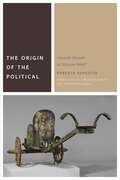
The Origin of the Political: Hannah Arendt or Simone Weil? (Commonalities)
By Roberto Esposito. 2017
In this book Roberto Esposito explores the conceptual trajectories of two of the twentieth century’s most vital thinkers of the…
political: Hannah Arendt and Simone Weil. Taking Homer’s Iliad—that “great prism through which every gesture has the possibility of becoming public, precisely by being observed by others”— as the common origin and point of departure for our understanding of Western philosophical and political traditions, Esposito examines the foundational relation between war and the political.Drawing actively and extensively on Arendt’s and Weil’s voluminous writings, but also sparring with thinkers from Marx to Heidegger, The Origin of the Political traverses the relation between polemos and polis, between Greece, Rome, God, force, technicity, evil, and the extension of the Christian imperial tradition, while at the same time delineating the conceptual and hermeneutic ground for the development of Esposito’s notion and practice of “the impolitical.”In Esposito’s account Arendt and Weil emerge “in the inverse of the other’s thought, in the shadow of the other’s light,” to “think what the thought of the other excludes not as something that is foreign, but rather as something that appears unthinkable and, for that very reason, remains to be thought.” Moving slowly toward their conceptualizations of love and heroism, Esposito unravels the West’s illusory metaphysical dream of peace, obliging us to reevaluate ceaselessly what it means to be responsible in the wake of past and contemporary forms of war.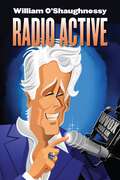
Radio Active
By William O'Shaughnessy. 2019
Radio Active is William O’Shaughnessy’s fifth collection of essays, on-air interviews, tributes and eulogies, endorsements, recollections of an evening, and…
more from “perhaps the finest broadcaster in America” whose commentaries are akin to “potato chips” per former Secretary of State Henry Kissinger because “You can’t stop with only one.”The book opens with a ringing signature defense of the First Amendment and collected O’Shaughnessy correspondence with heroes and “villains,” and insightful sections honoring former New York Governor Mario Cuomo, who said, “When O’Shaughnessy is on his game . . . he’s better than anyone on the air or in print.” There is also a section on the estimable Bush family.In eliciting “provocative and candid revelations” from his wide circle, this new compendium pulses with brilliant, insightful prose and a life-affirming reverence for luminous people, places, and events, past and present.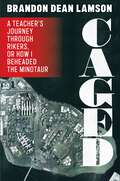
Caged: A Teacher's Journey Through Rikers, or How I Beheaded the Minotaur
By Brandon Dean Lamson. 2023
An honest and gripping memoir of one man’s life-altering experience teaching at Rikers Island.When Brandon Dean Lamson first accepted the…
teaching position at Horizon Academy, a court-mandated academic program for eighteen- to twenty-year-old prisoners at Rikers Island, even he had to question his own motivation. Why was he risking his life every day at a prison notorious for being one of the most dangerous places to work? Was it his small way of making amends for the blatant and pervasive racism he witnessed every day growing up in his small Southern town? Or was it to prove he wasn’t afraid to go where his own father, a prominent District Court judge, had sent both the innocent and guilty alike? In Caged, Lamson provides an intimate view of his transformative experience teaching inmate students on Rikers Island.Rikers Island resonates as a place of horrific violence and inescapable punishment, one of the last places in America that truly invoke overwhelming, universal fear. Set in the late 1990s—a time when the city was rapidly changing into an increasingly corporatized and policed space—Caged exposes a criminal justice system designed to thwart efforts to rehabilitate and educate the incarcerated. Lamson’s first-hand account illustrates how penitentiaries too often use prison education as another means of control.Written in a gripping, confessional narrative, Caged explores the consequential impact of Lamson’s move to New York City, his childhood experiences with racial justice, and his journey working in four prisons over the course of three years. Lamson provides glimpses into his own self-destructive behavior as parallels emerge between his life on Rikers and his personal life, his white privilege, and how his behavior progressively entraps him in ways that resonate with the challenges faced by his students. The book intimately captures how incarceration changes both prisoner and educator alike as Lamson struggles to integrate into life outside prison after his departure from Horizon Academy.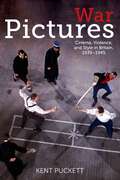
In this original and engaging work, author Kent Puckett looks at how British filmmakers imagined, saw, and sought to represent…
its war during wartime through film. The Second World War posed unique representational challenges to Britain’s filmmakers. Because of its logistical enormity, the unprecedented scope of its destruction, its conceptual status as total, and the way it affected everyday life through aerial bombing, blackouts, rationing, and the demands of total mobilization, World War II created new, critical opportunities for cinematic representation.Beginning with a close and critical analysis of Britain’s cultural scene, War Pictures examines where the historiography of war, the philosophy of violence, and aesthetics come together. Focusing on three films made in Britain during the second half of the Second World War—Michael Powell and Emeric Pressburger’s The Life and Death of Colonel Blimp (1943), Lawrence Olivier’s Henry V (1944), and David Lean’s Brief Encounter (1945)—Puckett treats these movies as objects of considerable historical interest but also as works that exploit the full resources of cinematic technique to engage with the idea, experience, and political complexity of war. By examining how cinema functioned as propaganda, criticism, and a form of self-analysis, War Pictures reveals how British filmmakers, writers, critics, and politicians understood the nature and consequence of total war as it related to ideas about freedom and security, national character, and the daunting persistence of human violence. While Powell and Pressburger, Olivier, and Lean developed deeply self-conscious wartime films, their specific and strategic use of cinematic eccentricity was an aesthetic response to broader contradictions that characterized the homefront in Britain between 1939 and 1945. This stylistic eccentricity shaped British thinking about war, violence, and commitment as well as both an answer to and an expression of a more general violence.Although War Pictures focuses on a particularly intense moment in time, Puckett uses that particularity to make a larger argument about the pressure that war puts on aesthetic representation, past and present. Through cinema, Britain grappled with the paradoxical notion that, in order to preserve its character, it had not only to fight and to win but also to abandon exactly those old decencies, those “sporting-club rules,” that it sought also to protect.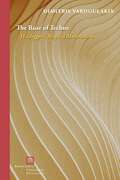
The Ruse of Techne: Heidegger’s Magical Materialism (Perspectives in Continental Philosophy)
By Dimitris Vardoulakis. 2024
The Ruse of Techne offers a reappraisal of Heidegger’s entire work by focusing on the forms of activity he regards…
as separate from instrumentality. Non-instrumental activities like authenticity, poetry, and thinking—in short, the ineffectual—are critical for Heidegger as they offer the only path to the truth of being throughout his work.By unearthing the source of the conception of non-instrumental action in Heidegger’s reading of Aristotle, Vardoulakis elaborates how it forms part of Heidegger’s response to an old problem, namely, how to account for difference after positing a single and unified being that is not amenable to change. He further demonstrates that an action without ends and effects leads to an ethics and politics rife with difficulties and contradictions that only become starker when compared to other responses to the same problem that we find in the philosophical tradition and which rely on instrumentality.Heidegger’s conception of an action without ends or effect forgets the role of instrumentality in the tradition that posits a single, unified being. And yet, the ineffectual has had a profound influence in how continental philosophy determines the ethical and the political since World War II. The critique of the ineffectual in Heidegger is thus effectively a critique of the conception of praxis in continental philosophy. Vardoulakis proposes that it is urgent to undo the forgetting of instrumentality if we are to conceive of a democratic politics and an ethics fit to respond to the challenges of high capitalism.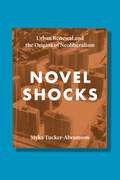
Novel Shocks: Urban Renewal and the Origins of Neoliberalism
By Myka Tucker-Abramson. 2019
Throughout the 1950s, a coalition of developers, politicians, and planners bulldozed vast areas of land deemed “slums” or “blighted” to…
make way for freeways, public and private housing projects, cultural centers, and skyscrapers. While the program was national, New York was ground zero, and the demolition and monumental reconstruction of the city created a distinctive urban sensorium, rooted in the new segregated landscapes of prosperous white private space and poor black public space.Novel Shocks situates these landscapes at the center of the midcentury novel, arguing that James Baldwin, Ralph Ellison, Patricia Highsmith, Ayn Rand, William Burroughs, Sylvia Plath, and Warren Miller all registered these new urban spaces as traumatic “shocks” that required new aesthetic forms. Rejecting older shock-based modernisms, these novelists forged a new modernism, which reimagined shock as a therapeutic force that would create a more flexible, self-reliant, and resilient subject that would nourish neoliberalism’s roots. In offering a cultural prehistory of neoliberalism, Novel Shocks resituates the Cold War novel as a key archive for understanding neoliberalism’s emergence and offers a more materialist and historically grounded account of neoliberalism’s subjective, affective, and ideological structures.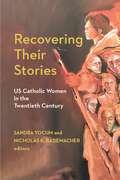
Recovering Their Stories: US Catholic Women in the Twentieth Century (Catholic Practice in the Americas)
By Sandra Yocum and Nicholas K. Rademacher. 2024
Celebrating the diverse contributions of Catholic lay women in 20th century AmericaRecovering Their Stories focuses on the many contributions made…
by Catholic lay women in the 20th century in their faith communities across different regions of the United States. Each essay explores the lives and contributions of Catholic lay women across diverse racial, ethnic, and socio-economic backgrounds, addressing themes related to these women’s creative agency in their spirituality and devotional practices, their commitment to racial and economic justice, and their leadership and authority in sacred and public spaces Taken together, this volume brings together scholars working in what otherwise may be discreet areas of academic study to look for patterns, areas of convergence and areas of divergence, in order to present in one place the depth and breadth of Catholic lay women’s experience and contributions to church, culture, and society in the United States. Telling these stories together provides a valuable resource for scholars in a number of disciplines, including American Catholic Studies, American Studies, Women and Gender Studies, Feminist Studies, and US History. Additionally, scholars in the areas of Latinx studies, Black Studies, Liturgical Studies, and application of Catholic social teaching will find the book to be a valuable resource with respect to articles on specific topics.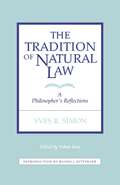
The Tradition of Natural Law: A Philosopher's Reflections
By Yves R. Simon, Vukan Kuic. 1992
Available in a new digital edition with reflowable text suitable for e-readersThe tradition of natural law is one of the…
foundations of Western civilization. At its heart is the conviction that there is an objective and universal justice which transcends humanity’s particular expressions of justice. It asserts that there are certain ways of behaving which are appropriate to humanity simply by virtue of the fact that we are all human beings. Recent political debates indicate that it is not a tradition that has gone unchallenged: in fact, the opposition is as old as the tradition itself. By distinguishing between philosophy and ideology, by recalling the historical adventures of natural law, and by reviewing the theoretical problems involved in the doctrine, Simon clarifies much of the confusion surrounding this perennial debate. He tackles the questions raised by the application of natural law with skill and honesty as he faces the difficulties of the subject. Simon warns against undue optimism in a revival of interest in natural law and insists that the study of natural law beings with the analysis of “the law of the land.” He writes not as a polemicist but as a philosopher, and he writes of natural law with the same force, conciseness, lucidity and simplicity which have distinguished all his other works.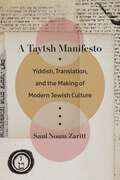
A Taytsh Manifesto: Yiddish, Translation, and the Making of Modern Jewish Culture
By Saul Noam Zaritt. 2025
A Taytsh Manifesto calls for a translational paradigm for Yiddish studies and for the study of modern Jewish culture. Saul…
Noam Zaritt calls for a shift in vocabulary, from Yiddish to taytsh, in order to promote reading strategies that account for the ways texts named as Jewish move between languages and cultures. Yiddish, a moniker that became dominant only in the early twentieth century, means “Jewish” and thus marks the language with a single identity: of and for a Jewish collective. In contrast, this book calls attention to an earlier and, at one time, more common name for the language: taytsh, which initially means “German.” By using the term taytsh, speakers indicated that they were indeed speaking a Germanic language, a language that was not entirely their own. In time, when the word shifted to a verb, taytshn, it came to mean the act of translation. To write or speak in Yiddish is thus to render into taytsh and inhabit the gap between languages.A Taytsh Manifesto highlights the cultural porousness that inheres in taytsh and deploys the term as a paradigm that can be applied to a host of modern Jewish cultural formations. The book reads three corpora in modern Yiddish culture through the lens of translation: Yiddish pulp fiction, also known as shund (trash); the genre of the Yiddish monologue as authored by Sholem Aleichem and other prominent Yiddish writers; and the persistence of Yiddish as a language of vulgarity in contemporary U.S. culture. Together these examples help revise current histories of Yiddish while demonstrating the need for new vocabularies to account for the multidirectionality of Jewish culture. A Taytsh Manifesto develops a model for identifying, in Yiddish and beyond, how cultures intertwine, how they become implicated in world systems and empire, and how they might escape such limiting and oppressive structures.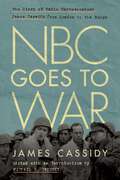
The diary of radio correspondent James Cassidy presents a unique view of World War II as this reporter followed the…
Allied armies into Nazi Germany.James Joseph Cassidy was one of 362 American journalists accredited to cover the European Theater of Operations between June 7, 1944, and the war’s end. Radio was relatively new, and World War II was its first war. Among the difficulties facing historians examining radio reporters during that period is that many potential primary documents—their live broadcasts—were not recorded. In NBC Goes to War, Cassidy’s censored scripts alongside his personal diary capture a front-line view during some of the nastiest fighting in World War II as told by a seasoned NBC reporter.James Cassidy was ambitious and young, and his coverage of World War II for the NBC radio network notched some notable firsts, including being the first to broadcast live from German soil and arranging the broadcast of a live Jewish religious service from inside Nazi Germany while incoming mortar and artillery shells fell 200 yards away. His diary describes how he gathered news, how it was censored, and how it was sent from the battle zone to the United States. As radio had no pictures, reporters quickly developed a descriptive visual style to augment dry facts. All of Cassidy’s stories, from the panic he felt while being targeted by German planes to his shock at the deaths of colleagues, he told with grace and a reporter’s lean and engaging prose.Providing valuable eyewitness material not previously available to historians, NBC Goes to War tells a “bottom-up” narrative that provides insight into war as fought and chronicled by ordinary men and women. Cassidy skillfully placed listeners alongside him in the ruins of Aachen, on icy back roads crawling with spies, and in a Belgian bar where a little girl wailed “Les Américains partent!” when Allied troops retreated to safety, leaving the town open to German re-occupation. With a journalistic eye for detail, NBC Goes to War unforgettably portrays life in the press corps. This newly uncovered perspective also helps balance the CBS-heavy radio scholarship about the war, which has always focused heavily on Edward R. Murrow and his “Murrow’s Boys.”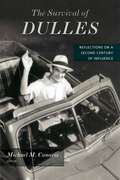
The Survival of Dulles: Reflections on a Second Century of Influence
By Michael M. Canaris. 2021
This collection, marking the centenary of Avery Dulles’s birth, makes an entirely distinctive contribution to contemporary theological discourse as we…
approach the second century of the cardinal’s influence, and the twenty-first of Christian witness in the world. Moving beyond a festschrift, the volume offers both historical analyses of Dulles’s contributions and applications of his insights and methodologies to current issues like immigration, exclusion, and digital culture. It includes essays by Dulles’s students, colleagues, and peers, as well as by emerging scholars who have been and continue to be indebted to his theological vision and encyclopedic fluency in the ecclesiological developments of the post-conciliar Church. Though focused more on Catholic and ecumenical affairs than interreligious ones, the volume is intentionally outward-facing and strives to make clear the diverse and pluralistic contours of the cardinal’s nearly unrivaled impact on the North American Church, which truly crossed ideological, denominational, and generational boundaries. While critically recognizing the limits and lacunae of his historical moment, it serves as one among a multitude of testaments to the notion that the ripples of Avery Dulles’s influence continue to widen toward intellectually distant shores.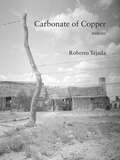
Carbonate of Copper
By Roberto Tejada. 2025
Bringing together lyric poetry, documentary photographs, and lives lived along the U.S.-Mexico borderlandWritten during extended periods in Brownsville, McAllen, and…
Marfa, Texas, in Carbonate of Copper Roberto Tejada gives voice to unsettled stories from the past, as well as to present-day experiences of custody and displacement. The poems stage scenes adjacent to the U.S.-Mexico border and to the realities of migration warped by jarring political vitriol, bearing witness to past and present-day hazards and sorrows wagered by those in search of asylum. So enabled, these poems make visible not only the infrastructure of militarized surveillance and its detention complex but also the aspiration to justice and mercy and the resilient self-organized order of time for migrants seeking human dignity while awaiting passage to the other side of the dividing line.The book’s title refers also to a mineral found in azurite and malachite, a color medium that had an impact on art during the first phase of globalization, the ensuing colonial enterprise, and its systems of extraction. Carbonate of copper was less desirable than the deeper ultramarine made from ground lapis lazuli, but Renaissance artists and patrons nonetheless coveted it and prompted a market for the blue derivative used in tempera and oil pigment. The blue powder pigment serves, too, as a form of sorcery: one that would ward off those who deal in injury of the already dispossessed.Turning his attention to the forced relocation of peoples, the COVID-19 death toll, the encroaching dangers of illiberal rule, the meanings of home and eviction, the power of cultural memory, as well as his artistic forebears, Tejada accounts for the uncounted and those excluded from belonging in voices that tell the cruel fortunes and joyful vitality of human and non-human life forms.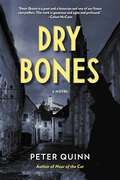
Dry Bones (The Fintan Dunne Trilogy)
By Peter Quinn. 2021
Dry Bones, the third novel of the Fintan Dunne series by Peter Quinn, follows Fintan, who works for the OSS,…
the forerunner of the Central Intelligence Agency (CIA). The novel is set during World War II, when Fintan teams up with several of his colleagues working to rescue several intelligence officers who had been fighting the Nazis inside Czechoslovakia. Things go awry and the team soon uncovers a huge conspiracy that may change the course of their careers and their lives. After the end of the war, many of his colleagues have bad things happen to them. The common thing about his friends who either go missing or end up dead is that they were trying to unearth the mystery of an infamous doctor who had gone missing. It seems the CIA is determined to ensure that what happened to the infamous doctor who had made his name experimenting on prisoners of war remained a secret.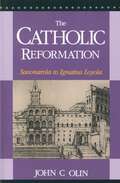
The Catholic Reformation: Savonarola to St. Ignatius Loyola.
By John C. Olin. 1992
Available in a new digital edition with reflowable text suitable for e-readersThis work contains fifteen key documents illustrative of reform…
in the Church in the period from 1495 to 1540, an age of great religious ferment and upheaval, which is marked historically by the crisis known as the Protestant Reformation. The documents collected in this work focus on the simultaneous struggle for renewal and reform within the Catholic Church. There was much amiss within the Church at the close of the Middle Ages. The Protestant Reformation threw into high relief the urgent need for religious reform. Involving basic questions of doctrine, practice, and authority, this severe trial put in jeopardy the very life of the existing Catholic Church. The balanced selection of notable and representative source materials tells their story in a lively and dramatic way. This important work on a little-known aspect of a turbulent era is a valuable contribution to Reformation studies.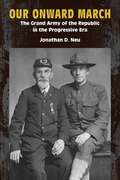
Our Onward March: The Grand Army of the Republic in the Progressive Era (Reconstructing America)
By Jonathan D. Neu. 2025
Provides vital new evidence that Union veterans remained stubbornly opposed to the nation’s reconciliationist tendencies and unwilling to surrender the…
causes for which they foughtUnion soldiers’ service to the nation did not end in 1865. Instead, it persisted well into the twentieth century as hundreds of thousands of veterans joined the Grand Army of the Republic (GAR) and directed the reform and improvement of their communities through their fraternal membership in thousands of local posts around the country.In Our Onward March, Jonathan D. Neu shows how Union veterans of the GAR drew on lessons they learned in the Civil War—lessons about broad principles like democracy, freedom, and loyalty—to undertake grassroots civic projects designed to address the rampant social ills and challenging foreign policy issues associated with US modernization. Armed this time with sage wisdom and unwavering principles, they mobilized again to consummate their wartime victory with reform-minded activism on behalf of establishing an even more perfect Union.Extending the boundaries of America’s post–Civil War era, Neu investigates the GAR during the Progressive era, a period in the organization’s history that scholars have overlooked. Countering stubborn notions that the GAR was merely a pension advocacy group or an insular bastion of sentimental nostalgia, he reveals instead that the organization reached a turning point in 1890, after which it became an active and decentralized civic association whose members worked to instill a commitment to public life, engagement with community issues, and pride in the democracy they had defended as young men.Anchored by illuminating new source material, including post-minute books and fraternal records, Our Onward March places aging GAR members squarely among the diverse constellation of turn-of-the-century social reformers, using their memory of the Civil War to promote robust, veteran-led civic engagement. By situating Union veterans in this context, we see a more accurate portrait of the GAR post in American culture—as a local center of progressive activism.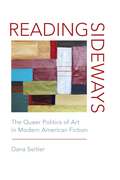
Reading Sideways: The Queer Politics of Art in Modern American Fiction
By Dana Seitler. 2019
Reading Sideways explores the pivotal role that various art forms played in American literary fiction in direct relation to the…
politics of gender and sexuality in works of modern American literature. It tracks the crosswise circulation of aesthetic ideas in fiction and argues that at stake in the aesthetic turn of these works was not only the theorization of aesthetic experience but also an engagement with political arguments and debates about available modes of sociability and sexual expression. To track these engagements, its author, Dana Seitler, performs a method she calls “lateral reading,” a mode of interpretation that moves horizontally through various historical entanglements and across the fields of the arts to make sense of—and see in a new light—their connections, challenges, and productive frictions. Each chapter takes a different art form as its object: sculpture, portraiture, homecraft, and opera. These art forms appear in some of the major works of literature of the period central to negotiations of gender, race, and sexuality, including those by Henry James, Davis, Willa Cather, Du Bois, Sarah Orne Jewett, and Mary Wilkins Freeman. But the literary texts that each chapter of this book takes as its motivation not only include a specific art form or object as central to its politics, they also build an alternative aesthetic vocabulary through which they seek to alter, challenge, or participate in the making of social and sexual life. By cultivating a counter-aesthetics of the unfinished, the uncertain, the small, the low, and the allusive, these fictions recognize other ways of knowing and being than those oriented toward reductively gendered accounts of beauty, classed imperatives established by the norms of taste, or apolitical treatises of sexual disinterestedness. And within them—and through “reading sideways”—we can witness the coming-into-legibility of a set of diffuse practices that provide a pivot point for engaging the political methods of minoritized subjects at the turn of the twentieth century.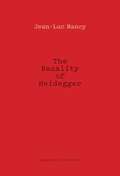
The Banality of Heidegger
By Jean-Luc Nancy. 2017
Heidegger and Nazism: Ever since the philosopher’s public involvement in state politics in 1933, his name has necessarily been a…
part of this unsavory couple. After the publication in 2014 of the private Black Notebooks, it is now unambiguously part of another: Heidegger and anti-Semitism.What do we learn from analyzing the anti-Semitism of these private writings, together with its sources and grounds, not only for Heidegger’s thought, but for the history of the West in which this thought is embedded? Jean-Luc Nancy poses these questions with the depth and rigor we would expect from him. In doing so, he does not go lightly on Heidegger, in whom he finds a philosophical and “historial” anti-Semitism, outlining a clash of “peoples” that must at all costs arrive at “another beginning.” If Heidegger’s uncritical acceptance of prejudices and long-debunked myths about “world Jewry” shares in the “banality” evoked by Hannah Arendt, this does nothing to lessen the charge. Nancy’s purpose, however, is not simply to condemn Heidegger but rather to invite us to think something to which the thinker of being remained blind: anti-Semitism as a self-hatred haunting the history of the West—and of Christianity in its drive toward an auto-foundation that would leave behind its origins in Judaism.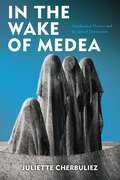
In the Wake of Medea: Neoclassical Theater and the Arts of Destruction
By Juliette Cherbuliez. 2020
In the Wake of Medea examines the violence of seventeenth-century French political dramas. French tragedy has traditionally been taken to…
be a passionless, cerebral genre that refused all forms of violence. This book explores the rhetorical, literary, and performance strategies through which violence persists, contextualizing it in a longer literary and philosophical history from Ovid to Pasolini.The mythological figure of Medea, foreigner who massacres her brother, murders kings, burns down Corinth, and kills her own children, exemplifies the persistence of violence in literature and art. A refugee who is welcomed yet feared, who confirms the social while threatening its integrity, Medea offers an alternative to western philosophy’s ethical paradigm of Antigone. The Medean presence, Cherbuliez shows, offers a model of radically persistent and disruptive outsiderness, both for classical theater and for its wake in literary theory.In the Wake of Medea explores a range of artistic strategies integrating violence into drama, from rhetorical devices like ekphrasis to dramaturgical mechanisms like machinery, all of which involve temporal disruption. The full range of this Medean presence is explored in treatments of the character Medea and in works figuratively invoking a Medean presence, from the well-known tragedies of Racine and Corneille through a range of other neoclassical political theater, including spectacular machine plays, Neo-Stoic parables, didactic Christian theater. In the Wake of Medea recognizes the violence within these tragedies to explain why violence remains so integral to literature and arts today.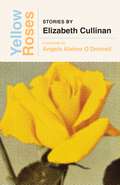
Yellow Roses
By Elizabeth Cullinan. 2024
One of SLATE Magazine's 15 Best Literary Rediscoveries of 2024A captivating collection unveiling the intricacies of love, life, and legacyThese…
twelve stories, told from the viewpoint of young women in life’s mid-passage, explore the splendors and miseries of love, both carnal and spiritual, and cast back through sickness and health to the engraving experiences of childhood and forward to the rituals and release of death and its occasion for recall.They tell us of a dutiful but not guiltless daughter faced with the wreckage a father has made of his life, of the pain of trying to steer steadily through a doomed affair with a dearly loved married man, and of the ironies attending the funeral of a priest uncle and the birthday of an aged mother.From the outwardly unremarkable frame of a single day—on Fire Island or in New York—an entire life and an encompassment of humanity are movingly conveyed. Then, with inverted telescope, the most subjective of inner realms is explored—through a hospital stay, a sudden name change, or the surprising end of all those dreaded piano lessons.Taken together, these stories are a far greater whole than the sum of their remarkable parts, an unforgettable exploration of the paradoxical toughness and vulnerability that define the mortal condition.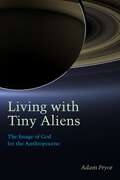
Astrobiology is changing how we understand meaningful human existence. Living with Tiny Aliens seeks to imagine how an individuals’ meaningful…
existence persists when we are planetary creatures situated in deep time—not only on a blue planet burgeoning with life, but in a cosmos pregnant with living-possibilities. In doing so, it works to articulate an astrobiological humanities.Working with a series of specific examples drawn from the study of extraterrestrial life, doctrinal reflection on the imago Dei, and reflections on the Anthropocene, Pryor reframes how human beings meaningfully dwell in the world and belong to it. To take seriously the geological significance of human agency is to understand the Earth as not only a living planet but an artful one. Consequently, Pryor reframes the imago Dei, rendering it a planetary system that opens up new possibilities for the flourishing of all creation by fostering technobiogeochemical cycles not subject to runaway, positive feedback. Such an account ensures the imago Dei is not something any one of us possesses, but that it is a symbol for what we live into together as a species in intra-action with the wider habitable environment.